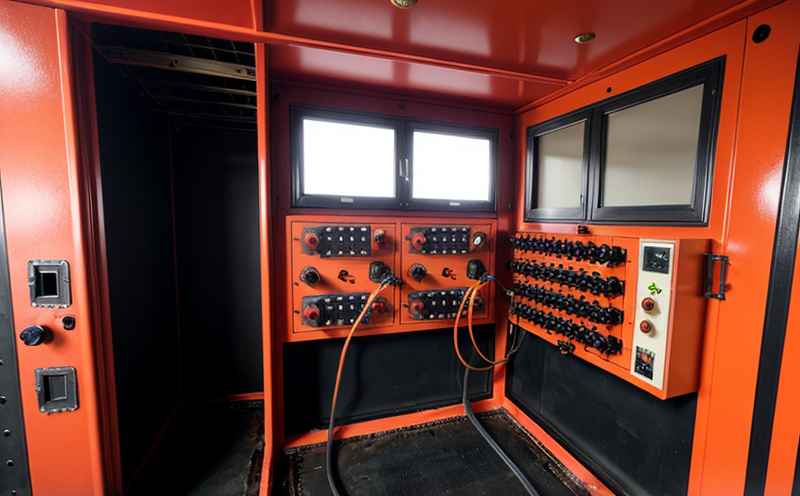Fire control panel inspection
The fire control panel is a critical component in any fire safety and protection system. This essential piece of equipment monitors the entire fire alarm system, ensuring that all components are functioning correctly. A comprehensive inspection ensures compliance with local and international standards while also safeguarding against potential hazards that could lead to costly downtime or worse.
The primary goal of a fire control panel inspection is to ensure its reliability in case of an emergency. This includes verifying the integrity of the circuitry, checking for any signs of corrosion or damage, testing the functionality of the system, and validating all connections. During this process, technicians will also check that all components are properly labeled and traceable back to their manufacturer specifications.
Performing regular inspections helps maintain optimal performance levels throughout its lifecycle. By doing so, operators can identify issues early on before they escalate into more serious problems. This proactive approach not only enhances safety but also reduces maintenance costs by addressing minor faults promptly. Additionally, it provides peace of mind knowing that in case of a fire outbreak, the system will operate as intended without interruption.
When inspecting a fire control panel, several key aspects need attention:
- Circuitry Integrity: Ensuring there are no signs of corrosion or damage.
- Functional Testing: Verifying the system operates correctly under various conditions.
- Labeling and Traceability: Confirm all components are properly identified with their respective manufacturers' specifications.
The inspection process typically involves several steps depending on the specific requirements set out by relevant standards such as ISO or ASTM. These may include visual inspections, functional tests, pressure testing for certain elements like sprinklers, and more detailed examinations using specialized tools.
By adhering strictly to these procedures, organizations can ensure they meet regulatory expectations while simultaneously protecting their investments in fire safety infrastructure.
Applied Standards
In the context of fire control panel inspections, adherence to relevant international standards is crucial. One such standard is ISO 13568 which provides guidelines for the design and performance requirements of fire detection systems including those controlled by a fire alarm control unit (FACU). Another important document is NFPA 72 National Fire Alarm Code which establishes criteria for the installation, maintenance, testing, and operation of fire warning systems.
These standards provide a framework within which inspections must be conducted ensuring consistency across different environments and facilities. They cover various aspects such as installation procedures, functional testing protocols, record keeping practices, and reporting mechanisms. By following these guidelines, inspectors can guarantee that their work meets the highest industry standards.
The application of these standards ensures not only compliance with legal requirements but also enhances overall system reliability. Regular inspections performed according to established protocols help maintain consistent quality levels over time which is vital for effective fire protection measures.
Customer Impact and Satisfaction
A well-executed fire control panel inspection has numerous benefits that extend beyond just meeting regulatory requirements. For customers, these services translate into tangible advantages including increased confidence in the reliability of their fire safety systems, reduced risk exposure due to early identification of potential issues, improved operational efficiency through optimized maintenance schedules, and enhanced reputation among stakeholders.
Customer satisfaction is a key metric for assessing the quality of service provided by laboratories specializing in this field. Positive outcomes such as successful audits, timely completions within budget constraints, and excellent communication throughout the project lifecycle contribute significantly towards achieving high levels of customer satisfaction.
The impact of effective inspections can be seen through reduced insurance premiums resulting from demonstrated due diligence regarding fire safety measures, minimized disruption during emergencies thanks to pre-emptive action taken during routine checks, and enhanced public perception associated with responsible corporate citizenship initiatives.
Use Cases and Application Examples
Incorporating regular inspections into a facility’s maintenance schedule is essential for maintaining peak performance of fire control panels. For instance, in large commercial buildings or industrial complexes where continuous operation is crucial, uninterrupted service provided by reliable fire detection systems can mean the difference between minor inconvenience and significant disruption.
Consider a case study involving an office building equipped with state-of-the-art fire alarm control units. After conducting regular inspections according to ISO standards, issues were detected early on allowing for prompt corrective actions. As a result, the organization avoided costly repairs later down the line while ensuring staff safety remained paramount.
Another example could be seen in hospitals where swift response times are critical during emergencies. By implementing best practices outlined in NFPA codes, healthcare providers can rest assured that their fire protection systems will function flawlessly when needed most.





